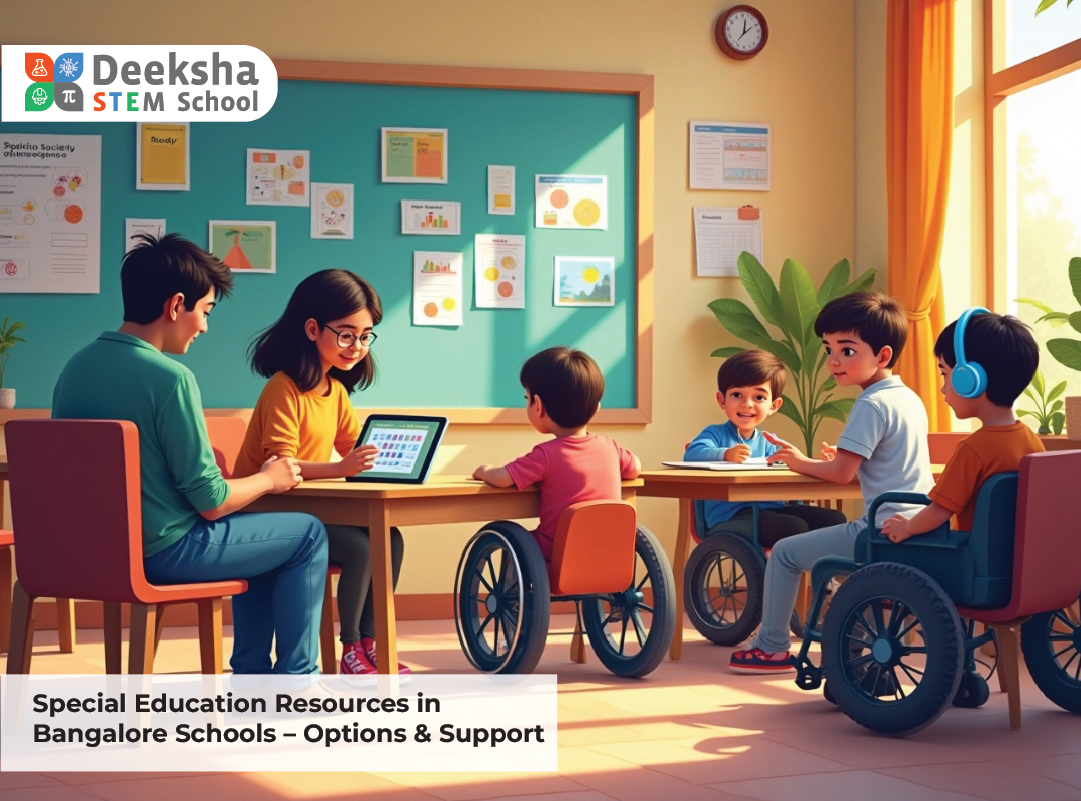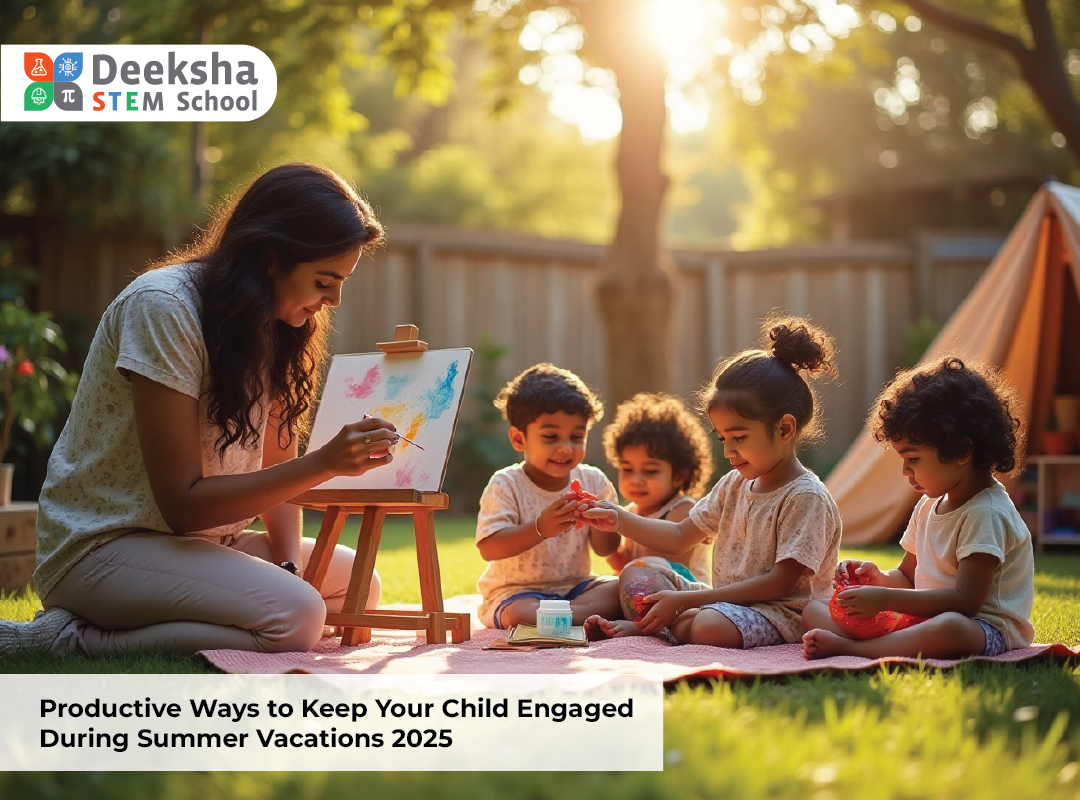How to Teach Kids to Learn from Failure and Bounce Back Stronger

Failure is often misunderstood. In academic environments, it’s seen as something to be avoided, but in reality, it’s one of the most powerful learning tools we can offer our children. At Deeksha STEM Schools, we believe that failure, when approached with the right mindset and support, is not a roadblock but a stepping stone to success. Teaching children to embrace setbacks, analyze them constructively, and bounce back not only improves academic outcomes but also builds character, perseverance, and a mindset geared for lifelong learning.
Why Embracing Failure is Important
Builds Emotional Resilience
When children are exposed to failure in a supportive environment, they learn that setbacks are not the end of the road. Instead, they begin to see them as a natural part of growth. This builds emotional resilience, helping them handle stress, disappointment, and criticism more effectively. Over time, students who learn from their mistakes are more emotionally balanced and better equipped to manage challenges in and out of school.
Encourages Growth Mindset
Children with a growth mindset believe their abilities can be developed through dedication and effort. They understand that intelligence and talent are just the starting point. By learning to embrace failure as feedback, they become more motivated to tackle difficult subjects, practice more, and ultimately improve. A growth mindset turns a failed math test into a challenge to master the concepts rather than a mark of inability.
Promotes Critical Thinking and Reflection
Failure encourages students to pause and ask important questions: What went wrong? What could I do differently? This reflective process fosters critical thinking. Instead of passively accepting outcomes, children learn to engage in deeper analysis and create strategies for improvement. It shifts focus from outcome to process, enhancing problem-solving capabilities and boosting independent thinking.
How Deeksha STEM Helps Students Learn from Failure
At Deeksha STEM, failure isn’t stigmatized—it’s seen as an essential part of education. Here’s how we cultivate an environment where students feel safe to fail and inspired to try again:
| Approach | How It Helps Students |
| Supportive Environment | Encourages risk-taking and exploration |
| Mentor Guidance | Helps students reframe failure constructively |
| Peer Collaboration | Fosters empathy and shared learning through setbacks |
| Reflection Activities | Strengthens introspection and long-term improvement |
| Flexible Assessment Models | Allows reassessments and growth-based feedback |
Additionally, our classrooms include:
- Learning Journals: Students track challenges and reflect on outcomes
- Failure-Focused Debriefs: After tests or projects, students discuss what didn’t work and why
- Public Showcases: Students present work-in-progress, emphasizing growth over perfection
Strategies Parents Can Use at Home
Parents play a vital role in shaping how children perceive failure. Here are several impactful ways to nurture resilience at home:
- Normalize Failure in Daily Life: Share your personal experiences with failure. Whether it’s a failed recipe, a missed promotion, or a life decision that didn’t go as planned, showing vulnerability helps children see failure as human.
- Praise Effort, Not Just Achievement: Acknowledge the hard work, persistence, and improvement your child shows, regardless of the final outcome.
- Encourage Experimentation: Let children try new things—even if there’s a chance of failure. Support them in joining new clubs, taking on challenging subjects, or learning unfamiliar skills.
- Ask Reflective Questions: Instead of “Why did you fail?” try “What did you learn from this?” or “What would you do differently next time?”
- Model Calm Reactions: When your child fails, respond with empathy and encouragement rather than disappointment. Your reaction will influence how they interpret the experience.
- Celebrate Small Recoveries: Even when a child struggles, celebrate their decision to try again. Resilience is built in those moments of bouncing back.
Benefits of Learning from Failure
Helping children learn from failure has far-reaching effects, both academically and personally. Here’s what it cultivates:
- Higher Emotional Intelligence: Kids learn to manage frustration and disappointment
- Increased Motivation: They are more likely to persevere in difficult tasks
- Enhanced Creativity: Failure removes the fear of being wrong, freeing up creative thinking
- Deeper Learning: Trial and error deepen understanding and retention
- Better Risk Management: Students become strategic in taking risks, weighing outcomes and preparing better
- More Empathy: Having failed, they understand and support peers facing similar situations
Frequently Asked Questions
1. How can I help my child not be afraid of failure?
- Help your child view failure as part of the learning process by sharing real-life examples of people who succeeded after setbacks. Encourage them to take small risks in a safe environment, and remind them that making mistakes is natural. Focus on what they learned rather than what went wrong, and reassure them with your presence and understanding.
2. Is failure necessary for success?
- Yes, failure is a critical part of achieving success. It provides real-time feedback on what isn’t working, enabling children to adjust their approach. Through failure, children build mental strength, adaptability, and grit—qualities that often define long-term success more than initial talent or intelligence.
3. How does Deeksha STEM handle academic setbacks?
- At Deeksha STEM, we take a positive, student-centered approach to failure. Teachers provide constructive, individualized feedback, encouraging reflection and self-assessment. We avoid punishment-based responses to setbacks and instead use growth-focused methods that support students as they learn and improve over time.
4. At what age should children be taught about failure?
- Children can start learning about failure from a very young age—even as early as preschool. Simple trial-and-error play, such as building blocks or art experiments, introduces the concept gently. As they grow, we use age-appropriate examples and conversations to deepen their understanding of resilience and perseverance.
5. Can too much failure damage confidence?
- Repeated failure without emotional support can impact a child’s confidence. However, when children are guided through setbacks with encouragement and empathy, they develop a stronger sense of self-worth. It’s crucial to balance challenges with achievable goals and provide reassurance to ensure that failures become learning experiences, not lasting wounds..
Final Thoughts
Failure isn’t the opposite of success—it’s part of the journey toward it. At Deeksha STEM Schools, we emphasize the importance of learning from every experience, especially the difficult ones. By creating a safe, supportive environment and equipping students with tools for reflection and resilience, we empower them to handle failure constructively and emerge stronger.
Together—with educators and parents aligned—we can teach children one of the most important lessons in life: that every fall holds the power to push them forward.
Visit our campuses at Bannerghatta Road, Judicial Layout, Kengeri, and Vidyanagar to see how we help students try, fail, grow, and succeed—confidently and fearlessly.




